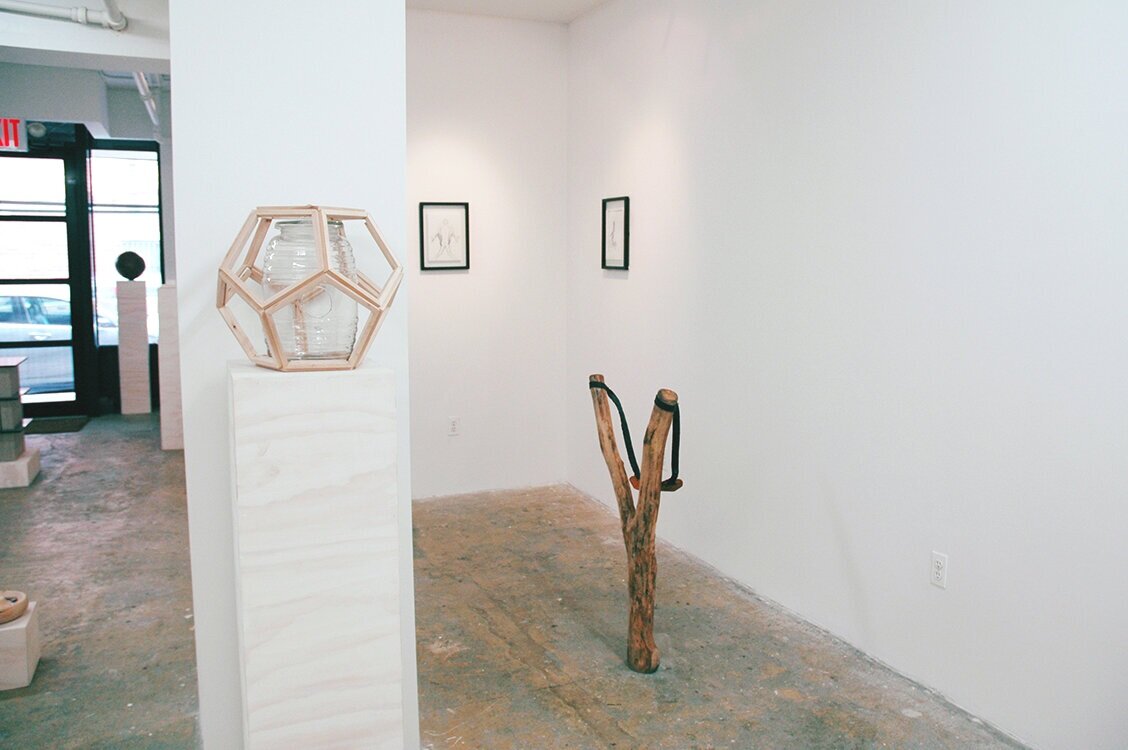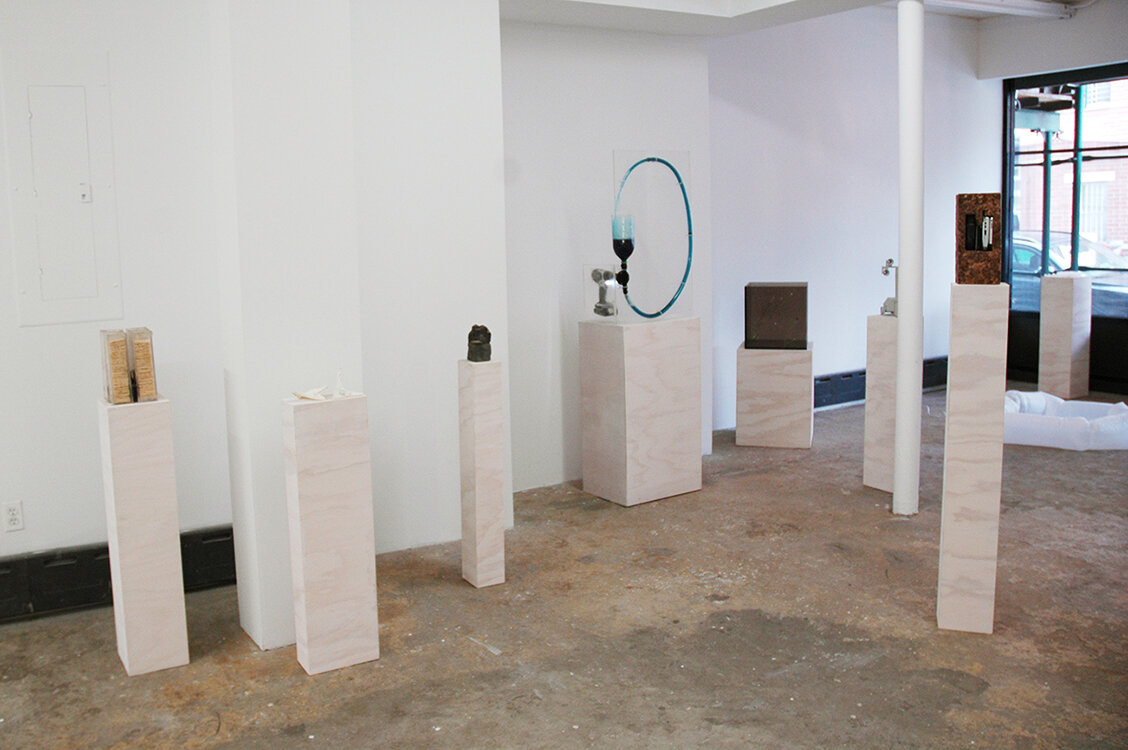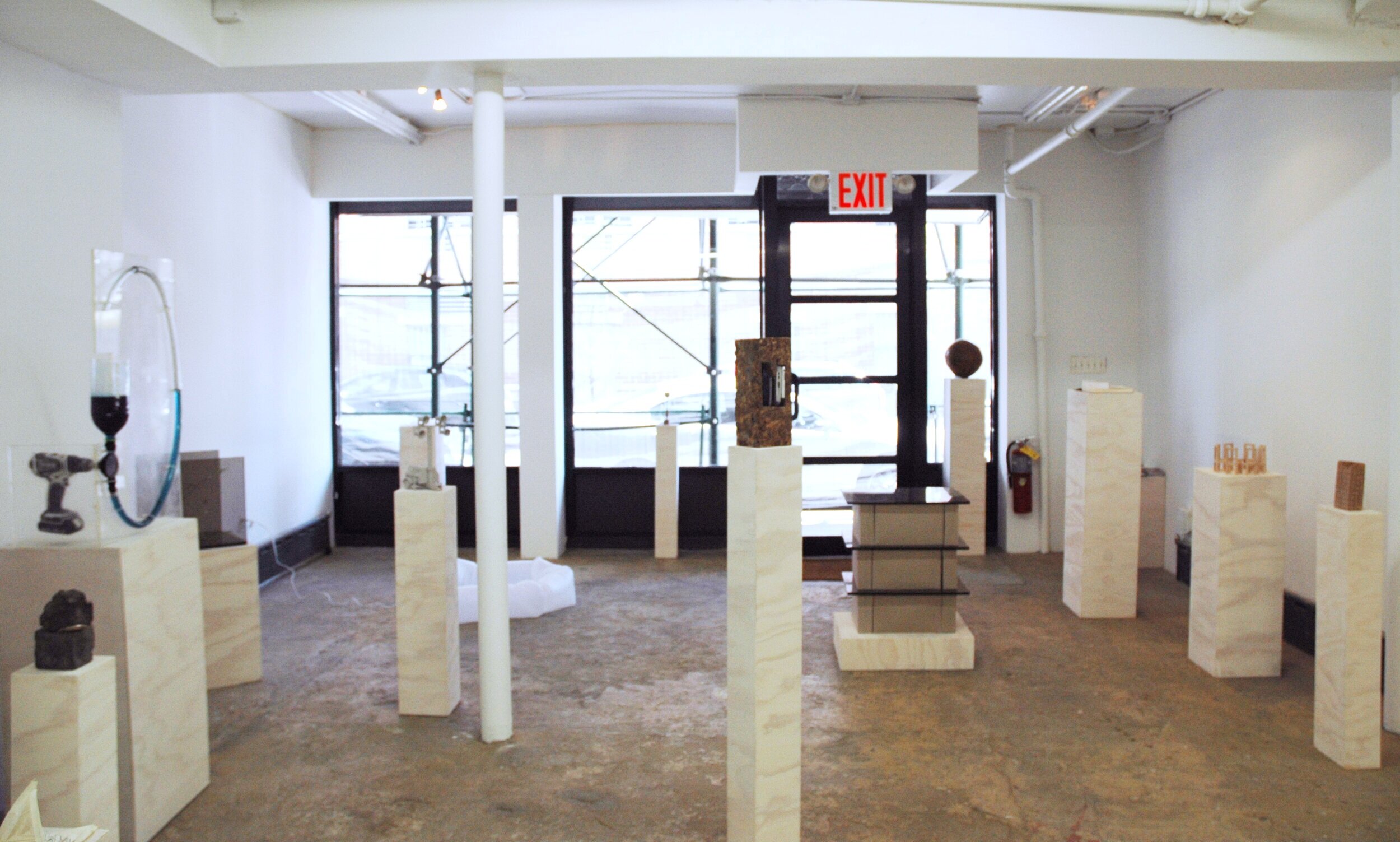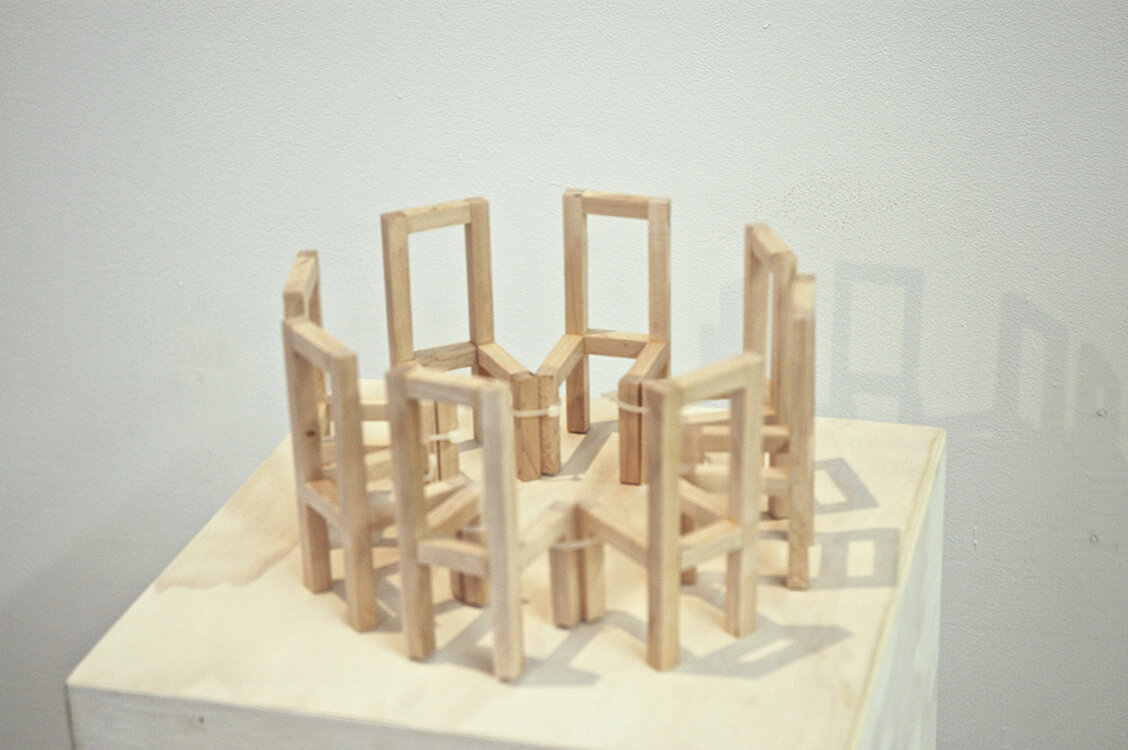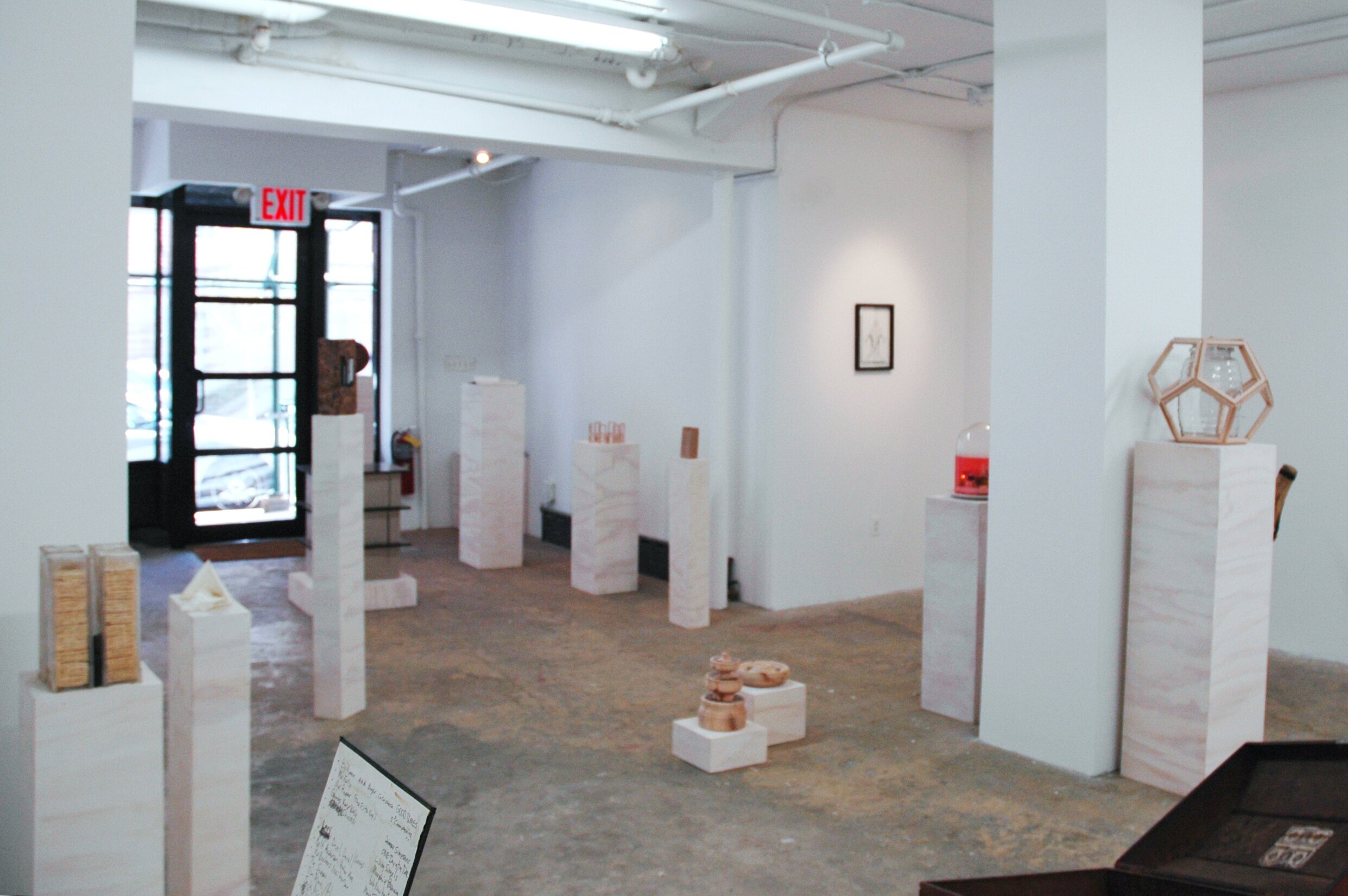Carlos Sandoval de León
April 26 – June 1, 2014
Carlos Sandoval De León’s repeated use of Untitled hints at his obdurate refusal to clue us into the meanings of these works. And it is this perplexing ambiguity that can be initially disconcerting, as a viewer. Oblique, self-effacing, and erasure: these are words that immediately come to mind when pondering his work. Yet, there is a method to Sandoval De León’s proverbial madness; the omissions that his enigmatic works conjure are not purposeful per se, but rather a reflection of what he calls “the inaccessibility of knowledge” itself. Put differently, Sandoval De León (born & raised in Mexico City) expresses frustration at institutional forms of knowledge—be it Catholicism or American educational systems—whose political motives are cloaked. The steady proliferation of information, masquerading as neutral, is in fact highly ideological. Thus, it is no accident that he has described himself, in relation to art, as a translator; his work is in some ways an aesthetic effort to decolonize the minds of his viewers, a praxis akin to learning to speak another language. By causing us to slow down and ruminate on their hidden mysteries, these quirky works seek to inculcate us in an alternative method of perception.
Materiality is his métier. While Sandoval De León’s work has been described previously as a process of embedding personal narratives and feelings into material objects (and it certainly does that) he seems just as interested, if not more so, in the richness of histories embedded in the materials themselves. Copper’s transformation from a mined compound into sheet metal and then, again, into coinage—which themselves become seemingly melted matter in Sandoval De León’s art—is one example of this. And occasionally these histories merge in idiosyncratic ways, such as the lustrous grainy woods fused with brightly-colored Chiclets® (the brands’ name derived from a word in Nahuatl, an ancient language spoken by the Aztecs). If the historicity and functionality of the often banal materials Sandoval De León utilizes—such as Plexiglas sheets, inverted cereal boxes, tape folded into zigzags, or, in earlier work, Latex condoms—are of prime importance, so too are their world-making capacities. Set on pedestals, like strange objects for observation, works like the 3D police watchtower, the fountain that fills itself, and the collage of medicine labels suggest that materials exist in tandem with the discourses—such as gentrification, policing, architecture, and public health—they participate with and in. They are also poetic illuminations of everyday life, Sandoval De León exposing, if only briefly, the submerged histories lying dormant like secrets.
– Uri McMillan, Los Angeles


